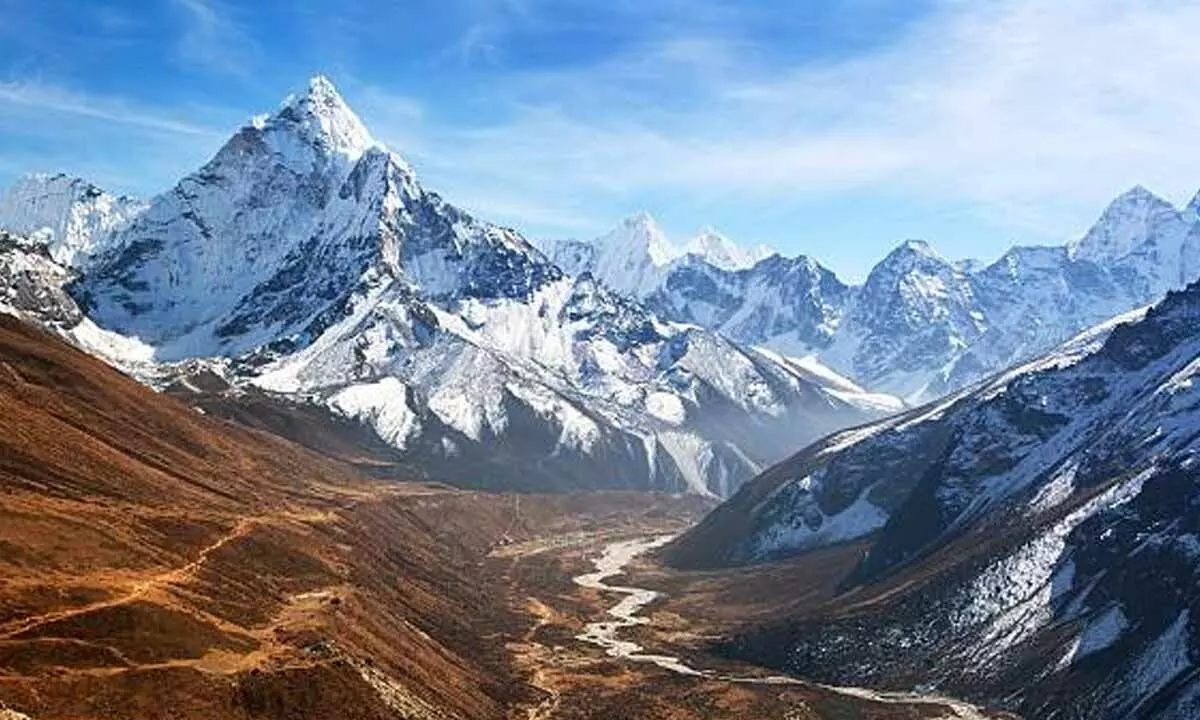The Himalayan blunder spells doom

The Himalayan blunder spells doom
As the Intergovernmental Panel on Climate Change (IPCC) was getting ready to publish the first installment of its latest report on the fragility of the Himalayas in 2013, some of the observations to be incorporated came in for criticism as it spelled doom for the region
As the Intergovernmental Panel on Climate Change (IPCC) was getting ready to publish the first installment of its latest report on the fragility of the Himalayas in 2013, some of the observations to be incorporated came in for criticism as it spelled doom for the region. When it was said that glaciers would disappear by 2035, the critics were criticised. However, the same year proved them right. Cloudbursts, landslides, flash floods, devastation and human deaths were the hallmark of 2013. No one is waking up to prevent the ecological disaster waiting to happen in the mountain ranges. The latest reports suggest that Joshimut town is sinking and several buildings have developed cracks. One could attribute Joshimut problem to other scientific reasons, but the fact that human activity had reached alarming levels in the picturesque Himalayan town, and an important spiritual centre in the path of Chardham, can't be disputed.
Himalayas are the youngest mountain ranges and are still jetting up. These are growing by the day and the seismic activity here is a sign of danger. The unbridled development and the concretisation of the mountain slopes are adding to the plight of the mountain ranges. Experts have been repeatedly warning the policy-makers in India and elsewhere but they are reluctant to accept a glaring and dangerous truth: combined human activities have stressed the Himalayas close to their limit.
We need positive action, not least a restriction on the number of tourists who visit during the monsoon season from June to September. Too many of them are unaware of the risks they run. Thousands of visitors perished in the Uttarakhand disaster in 2013. The government put the numbers at around 6,000, but in reality several times more perished as the passengers who travelled by the private vehicles had never been taken into account as most of these were illegal transport. Policy-makers must actively engage with scientists and experts on the problems facing the Himalayas and their people to make sustainable development work. Global warming is just one of the causes of disasters. There are many other man-induced pressures on the fragile mountains. Human population is increasing fast in the Himalayas, and so is the speed of the landscape changes needed to support it. Cattle grazing and rampant deforestation — on current trends, one-third of the total Indian Himalayan forest cover could be gone by 2100, it was said sometime back. But, now the deadline has been modified to 2075. Just 50 more years!
The endemic species also face extinction and the natural flow of water would be affected. Throw in the Chinese developmental activities and their water diversion plans, the Himalayas are staring at a disaster. The changing landscapes here transform natural ecosystems because of biological invasions and reduced biodiversity. Again, 400 new hydroelectric dams are proposed in the region by the Himalayan countries unmindful of the consequences to meet the energy requirement of the increasing habitations. Man can't be a part of any mountain's flora and fauna as he is anti-nature. As for Joshimut, the government had constituted a committee in the 70's itself and the Mishra Committee report said that Joshimut would be sinking soon. Government's concerns have a shelf life and these last till the formation of the committees. Alas!















